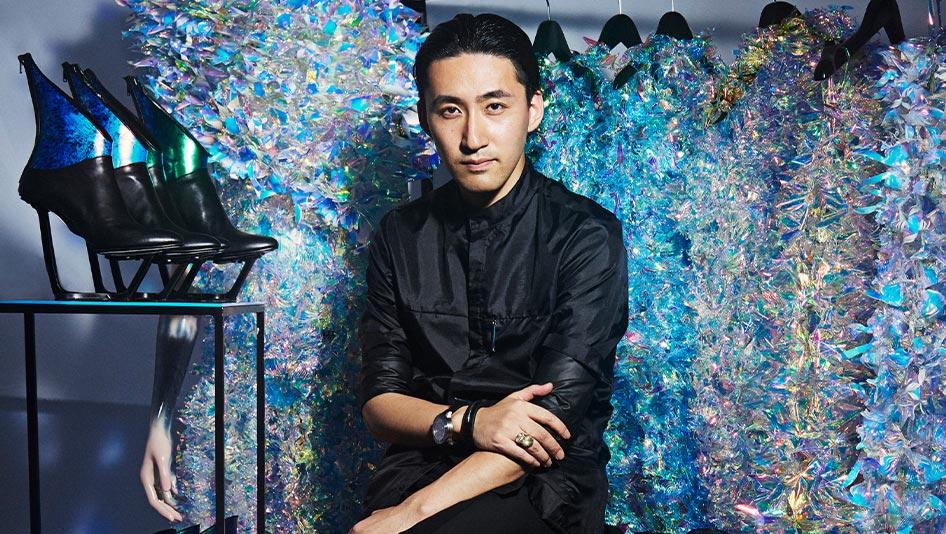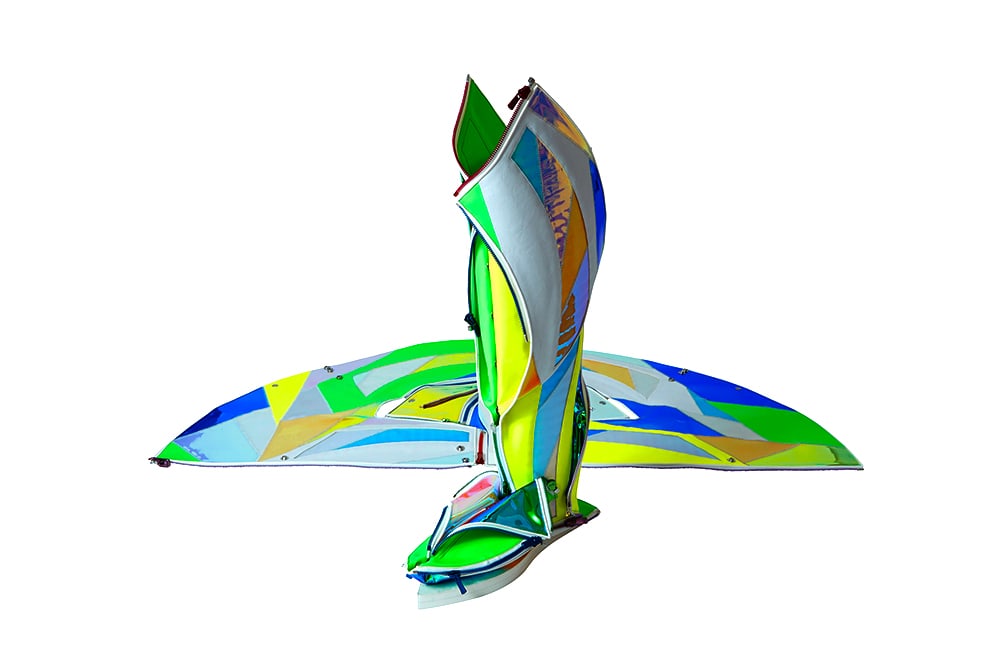
Born to a sculptor father and a jeweler mother, Yuima Nakazato was raised in an environment surrounded by modern art and various forms of expression from early childhood. He began making clothes through self-education before entering the Royal Academy of Fine Arts Antwerp’s Fashion Department. Nakazato’s graduation collection earned multiple awards in Europe, including at ITS in Trieste where he was selected twice – in two separate years – and in two different contest fields, fashion and accessories (only one other finalist, Heaven Tanudiredja, achieved this).
In 2016, Yuima Nakazato presented his first Paris Couture collection as an official guest designer selected by the Chambre Syndicale de la Haute Couture. He continually combines the newest in technology and craftsmanship in his creation processes.
We asked him a few questions about his vision, his latest collection presented at Paris Couture 2020 and what he would tell an audience at ITS Arcademy.
ITS: We first met you ages ago, and you are perhaps the only ITS finalist who has been selected not just more than once, but in different categories (fashion AND accessories), too. At the time your focus was exploring the latest technologies in terms of fabrics and possibilities, with a love for science fiction and costume design. Today, your vision – still grounded in exploring futuristic and innovative materials and techniques – is to develop garments which provide the joy and comfort of custom-made pieces. What are in your opinion the most interesting applications of technology in fashion today, and how can technology revolutionize our idea of garments?
YN: Mankind made their first clothing by skinning animals, and sewing the pelts together with threads also made out of the skin, and needles carved out of the animal’s bone. Eventually, we invented sewing machines that enabled many of us to wear high quality garments. Today, there are new ways to manufacture clothes like digital fabrication techniques. In a way, garment-making has evolved along with technological development in each era. The two are closely tied to each other. The technology is advancing at ever-increasing pace. I wonder how the clothes-making process will change in upcoming years.
To answer that question, I believe we can get a glimpse of how the world would look like if there is no restriction at all. For example, what would people wear when we are truly free from production cost, environmental impact, gravity, social inequality, and discrimination? What would be a definition of beauty in the future? If we are free from all conceivable limitations, we would be the ideal ourselves, and we would definitely want to go into that direction. My opinion is that technology helps us get there.
To me, the ultimate fashion design is to create garments that respect each and everyone’s individuality because everyone is different. An ideal garment for a person is one-of-a-kind attire that contains his or her entire identity. Everything else has some sort of discrepancies from one’s true self. The philosophy overlaps with the essence of couture, and this is why I do couture.

In order to deliver couture clothing to everyone, we will need to automate couture’s garment-making process. There are many restrictions to realize this vision at this point. However, as I said, I imagine the world without those restrictions, and when I do I see an amazing society. What if everyone can get their hands on the ideal garment for them?
I believe that the day this happens is not too far away.
ITS: In 2016 you had the honor to be selected by the Chambre Syndicale de la Haute Couture as the official guest for Haute Couture Fashion Week, the second Japanese designer ever chosen and the first in 12 years since Hanae Mori was on the Paris Fashion Week calendar. You have been showing at Haute Couture week since then, an incredible achievement that highlights even more your mix of exceptional craftsmanship, innovation and creativity. Can you tell us something about your latest collection?
YN: What needs to be done to create the most beautiful, most innovative garment on earth today? My belief is that we should not only seek beauty in the final looks, but also to seek beauty in every step of our production. We should all look for beauty in processes like patterns, sewing techniques, material development, and even disposals.
My latest collection is showcasing looks that combined our proprietary production system, TYPE-1, with the latest technology in biotech, digital fabrication and craftsmanship. My team consists of engineers, architects, pattern makers and artisans. The interdisciplinary team collaborated to create completely new materials and collection, as if we were a bunch of scientists in a lab looking for a breakthrough achievement, or an expedition walking through uncharted territories.
I would love for all of you to see our latest collection, presented on January 23rd. We live streamed it on Instagram. @yuimanakaza
ITS: Picture yourself speaking about your experience at the ITS Arcademy to an audience of teenagers who are passionate about design and about to decide what their next step will be after High School. What message would you like them to go back home with?
The most important thing is to trust your talent and possibilities, and to keep trying. In order to do that you first need to know yourself, what you envision, what you truly want to achieve. Asking those fundamental questions to yourself will help you create a unique story of your own, which eventually becomes your strength to stand out from the crowd.
The second point is not to look for results quickly. Things take time. Innovations answer today’s problems. The more fundamental the problem is, the more time you will need to come up with solutions. Please look up processes of historical inventions. All of them required a tremendous amount of time and energy, though these things are not always visible to us. Once the invention is out in the world, it spreads at a very fast pace, making it look like it took over the world in an instant, which could be deceiving. If you take a close look at these inventions, the ones that remain with us are the ones that took time and effort. Quick innovations become trends, and then go away. The true inventions stay. This is what I believe. And this is why I research all technologies old and new, and keep running experiments.
Keep imagining the best results for your projects at all times. Then, you will be able to overcome any obstacles, regardless of how hard or desperate it looks.

